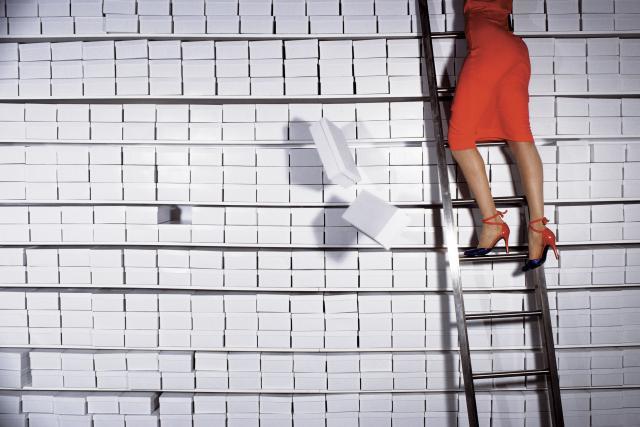Guy Bourdin: Subversion, Surrealism And Sex
Last Updated 29 November 2014






Londonist Rating: ★★★☆☆
Fashion photographer and artist Guy Bourdin gets the largest UK retrospective of his work at Somerset House this winter. Over 250 works are presented, including many previously unpublished works drawn from the Bourdin estate, ranging from his late 1950s-1990s fashion shoots for Vogue and Parisian designer Charles Jourdan, to dramatic Polaroids, layouts for his fashion shoots and even rarely-seen paintings and sketches.
Guy Bourdin's enigmatic, and often subversive, works became influential in advertising and fashion for their strong psychological impact and the creation of a sense of desire, even if not for the objects being advertised. Bourdin was a protégé of surrealist photographer, Man Ray, whose influence can be strongly seen in the graphic, but disembodied, images of the models, but Bourdin also developed his own distinct style. His use of film noir-inspired drama in his fashion shoots heightened the psychological impact of his images. Bourdin's photography was revolutionary for the time, creating a story around the products presented; rather than selling the products themselves, the advertisement itself became the focus of attraction.
The images on display are indeed striking: disembodied legs wearing elegant shoes skip lightly across urban streetscapes, beaches and parklands; beautiful, semi-clad women lie splayed or languorously draped across furniture in anonymous, moody interiors or merge with the landscape, and arachnoid conglomerations of legs without bodies appear both menacing and seductive. While many of the images are overtly sexual or disturbing, such as a naked model appearing 'dead' on the floor with a vivid pool of red liquid (blood? Nail laquer?) streaming out of her mouth, or a model clad only in satin lingerie pulling a phone cord tightly against her crotch, the images convey the same sense of desire in their sensuous textures, dynamic composition and bold colours.
Bourdin's images from his Walking Legs advertising campaign for Charles Jourdan shoes are also on view, a product of a 1979 'road trip' around Britain where Bourdin posed shots of a mannequin's legs displaying Jourdan's shoes in settings as diverse as Brighton beach huts and London's industrial Thameside docks. These seemingly simple, yet surreal shots convey a strange sense of place, making the familiar British landscape appear uncanny.
The exhibition focuses on Bourdin's process of making images, which were meticulously staged. Bourdin planned each of his shots carefully, making numerous sketches, drafting layouts and taking Polaroid shots of locations and scenarios. While Bourdin's Polaroids may seem to be just rough sketches of his work, they are actually very strong compositions, taking account of light, shadow and form and enabling Bourdin to construct his images carefully. They are small works of art in their own right, and it is here that Bourdin's image-making process is most explicit.
Guy Bourdin: Image Maker continues at Somerset House in the Embankment Galleries until 15 March 2015. Tickets £9/£7.



